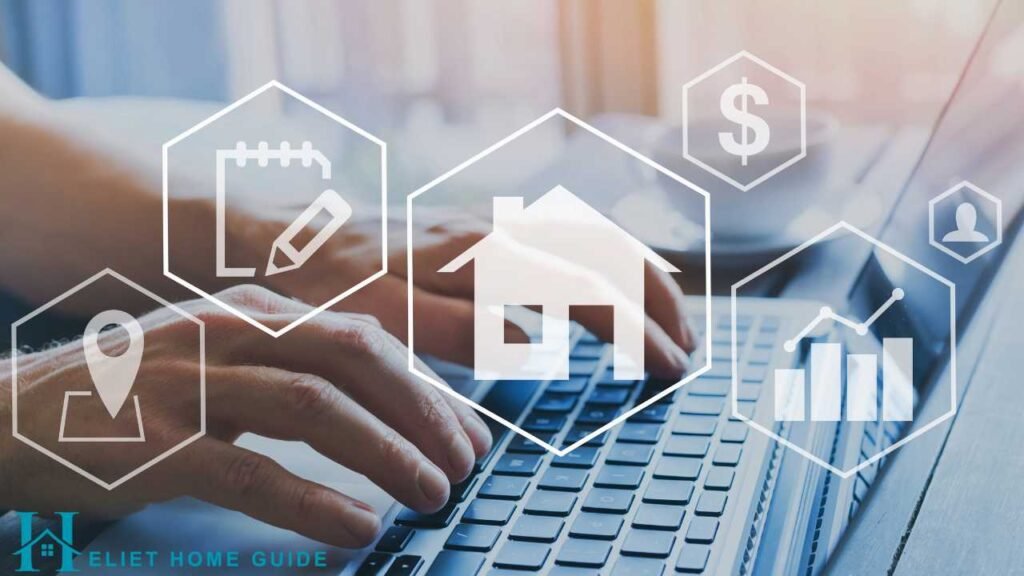When I sold my first home, I learned quickly how important the right pricing strategy is. One wrong step, and your chances of selling quickly at a satisfactory price can disappear. Unlike an ounce of gold, your home’s value isn’t fixed—it’s defined by ever-shifting conditions. These change constantly, and sometimes so rapidly that even experienced sellers can feel lost. In 2025, I advise every seller to look closely at the health of the local real estate market. What’s happening nationwide matters too—interest rate trends are a big deal right now. For example, rising rates could slow down buyer activity, while lower rates could bring in more offers. Also, buyers are more informed today and check neighborhood data like crime rates before making offers. So, when I priced my last home, I didn’t just look at similar listings—I studied everything, from local trends to nationwide shifts. That’s how I priced it effectively, and it sold faster than expected.
Grasping the Concept of True Market Value
When I was preparing my home for sale, I quickly learned that setting the right price isn’t about guessing—it’s about finding the fair market value (FMV).This is the price that the market assigns to your property at that particular moment. The goal is to assess and approximate the right asking price—one that a buyer is willing to pay and a seller is ready to accept. From my experience, the most effective way to ensure a quick sale that truly satisfies both sides is to stay honest about the numbers and trust what the market is telling you. It’s not just about emotions or investment—it’s about reality. When you align with the FMV, your home naturally attracts serious interest.

“Pricing your home according to the market’s rhythm will not only attract the right buyers but also help you sell faster and at a fair value.” – Real Estate Expert
The Importance of Accurately Estimating Your Home’s Value
One of the most effective ways to determine your home’s FMV in 2025 is to conduct a comparative market analysis (CMA) with the help of a skilled agent. This process involves a comparison of prices and features against both recently sold and for-sale homes in your area. In most cases, a strong CMA consists of two sets of data the agent prepares by evaluating comparable properties:
- Listed homes from the past 3–6 months that are still on the market, offering real-time insights.
- Sold homes from the past 6–12 months—though sometimes the agent may include sales data from as far back as two years for accuracy.
Your CMA should include specific details for each property, like asking or selling price, location, square footage, number of bathrooms and bedrooms, standout amenities like a stone fireplace or pool, and the price per square foot. From my own experience running CMAs, this breakdown helps sellers stay realistic and confident in their pricing strategy.

| Property Type | Timeframe | Purpose |
| Listed homes | 3–6 months | Provide real-time insights |
| Sold homes | 6–12 months | Offer historical accuracy |
| Comparative property features | N/A | Compare key aspects like size, amenities |
Other Methods to Gauge Your Home’s Fair Market Value
While a thorough CMA is usually enough to help your agent determine your home’s FMV, there are other options you can consider for more insight. For example:
- Independent appraisal: You can hire a professional appraiser to give you an unbiased estimate of your home’s FMV. Appraisals typically cost between $250–500 and take several hours to conduct.
- Open houses: Attend open houses in your area to compare properties like yours, both inside and out.
- Online sources: Websites like www.zillow.com and www.housevalues.com offer free, instant estimates of FMV based on factors like location and selling price history, though their FMVs are generally rough.
In my experience, combining these methods with a CMA can give you a clearer understanding of your home’s true value.

| Method | Details |
| Independent appraisal | A professional appraiser can provide an unbiased estimate, typically costing $250–500 |
| Open houses | Attend open houses to compare similar homes in your area |
| Online sources | Websites like www.zillow.com and www.housevalues.com offer free estimates based on location and selling price history, though FMVs are often rough |
Factors to Consider When Setting the Ideal Price
When deciding on your asking price, use your FMV as a starting point, but remember that adjustments might be necessary. You can adjust your price up or down based on certain factors:
- Urgency: If you need to move quickly, consider lowering your price 10–15% below your home’s FMV to attract more buyers and expedite the sale.
- Local inventory: Ask your agent to provide historical data on the unsold homes in your area. If there’s a glut in the market, it might be wise to set your price lower to appeal to bargain hunters.
- Local inventory: Ask your agent to provide historical data on the unsold homes in your area. If there’s a glut in the market, it might be wise to set your price lower to appeal to bargain hunters.
From experience, it’s crucial to avoid setting your price above the FMV, as that often leads to frustration and delays. Most buyers and agents have access to the same FMV data, so overpriced listings tend to be ignored quickly.

| Factor | Adjustment |
| Urgency | Lower price 10–15% below FMV to attract more buyers |
| Local inventory | If there’s a glut, lower price to appeal to bargain hunters |
| Market Conditions | Avoid pricing above FMV to prevent delays and frustration |
“The right price is not just a number; it’s the key to opening doors to your home’s new owner.” – Seasoned Realtor
Additional Details About Pricing Adjustments: While you’ve covered price adjustments based on urgency and local inventory, you could also briefly mention the impact of seasonality on pricing. For instance, in certain areas, homes might sell for a premium in spring or summer versus winter months, which could influence pricing strategies. You can also touch on how buyer demand fluctuates based on specific times of the year.
The Role of Your Real Estate Agent in Pricing Your Home: You’ve mentioned using a skilled agent to conduct a CMA, but emphasizing the agent’s value in the entire pricing process would strengthen the narrative. Sellers should understand that a good agent doesn’t just collect data—they also interpret trends and data points that help price the home effectively.
How Market Conditions and Urgency Affect Home Pricing: While you’ve covered FMV, you could include the concept of competitive pricing. This would involve understanding not only the market value but also how the home stacks up against similar listings. For example, you could suggest being aware of how your listing compares in terms of amenities or condition. You could also mention the “sweet spot” in pricing—setting the price in a range that doesn’t seem too high but still leaves room for negotiation.
How to Adjust Your Price Based on Local Market Trends: It could be beneficial to mention that pricing isn’t a one-time decision. If a home isn’t selling after being on the market for a while, sellers might need to reconsider their asking price. You could briefly talk about how often prices should be reviewed or adjusted based on market feedback.
Pricing Strategies to Stay Competitive in the Market: This is very relevant and important because understanding FMV is the foundation of pricing a home effectively. You already touched on FMV but further emphasizing that aligning your price with FMV leads to attracting serious buyers makes this section a good addition.
Accurately Finding Your Home’s Market Worth: This paragraph is very important for the article as it dives deeper into how to determine FMV and provides actionable steps like conducting a CMA. This will help your readers understand how to gather the necessary data to make an informed pricing decision.
Additional Ways to Find Your Home’s FMV: This is a great addition as it gives readers more methods to ensure they’re pricing correctly. With independent appraisals, open houses, and online tools, these are extra ways for sellers to double-check their pricing strategy.
Setting the Right Price for Your Home: This paragraph provides a very practical step in how to set a price, including strategies for pricing adjustments. It ties everything together well and gives readers solid advice they can apply immediately.
Frequently Asked Questions
What does FMV (Fair Market Value) mean in real estate?
FMV is the price a home is worth based on the current market, factoring in buyer demand, location, and similar property sales.
How do I find the FMV of my home?
To find FMV, conduct a Comparative Market Analysis (CMA) with an agent, or use online estimates, independent appraisals, and recent sales data.
Why is pricing my home correctly so important?
Correct pricing ensures quicker sales, reduces time on the market, and attracts serious buyers, preventing frustration from overpriced listings.
How can interest rates affect my home’s price?
Rising interest rates may slow buyer activity, while lower rates can boost demand, influencing your home’s pricing strategy.
What factors should I consider when setting my home price?
Consider urgency, local inventory, market conditions, and comparable properties in your area to determine the right price for your home.
How can an agent help with pricing my home?
A skilled agent conducts a CMA, interprets market trends, and helps set a competitive price based on detailed market analysis and buyer demand.
Should I adjust my price based on urgency?
Yes, if you need a quick sale, consider pricing 10-15% below FMV to attract more buyers and expedite the process.
How does local inventory affect my home’s price?
If there are many unsold homes nearby, lowering your price may make your home more attractive to buyers seeking a deal.
What role does seasonality play in home pricing?
Home prices often peak in spring and summer when demand is higher, so adjust your pricing based on the time of year to maximize profits.
How often should I review my home’s price?
Review your home’s price every 2-4 weeks. If it’s not selling, adjust the price based on market feedback to remain competitive.
Conclusion
In conclusion, determining the right price for your home is a critical step in ensuring a quick and successful sale. By understanding your home’s true market value (FMV) through tools like comparative market analysis (CMA), independent appraisals, and open houses, you can make informed pricing decisions. Remember, market conditions such as interest rates, local inventory, and seasonality can influence the ideal price, so it’s important to be flexible and adjust your asking price as needed. A skilled real estate agent can also play a vital role in interpreting trends and helping you set a competitive price. With the right approach, you’ll attract serious buyers and increase your chances of selling at a fair value, making the home-selling process smoother and more efficient.

Rhys Henry is a Luxury Realtor & Senior Partner at Tyron Ash International, specializing in South East London & Kent Division. A dedicated real estate agent, Rhys is passionate about helping clients navigate buying, selling, and investing in luxury properties with expert guidance and industry-leading strategies.

